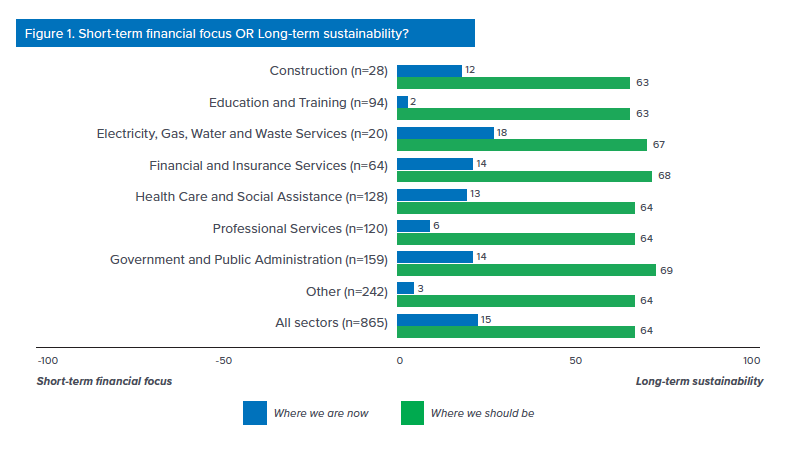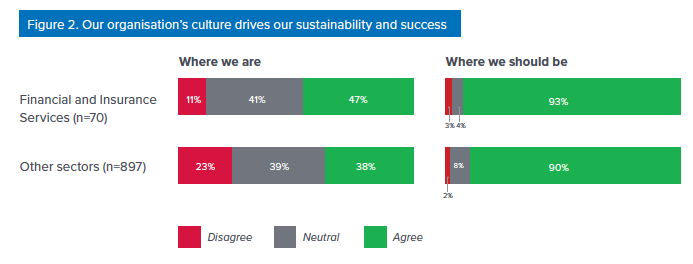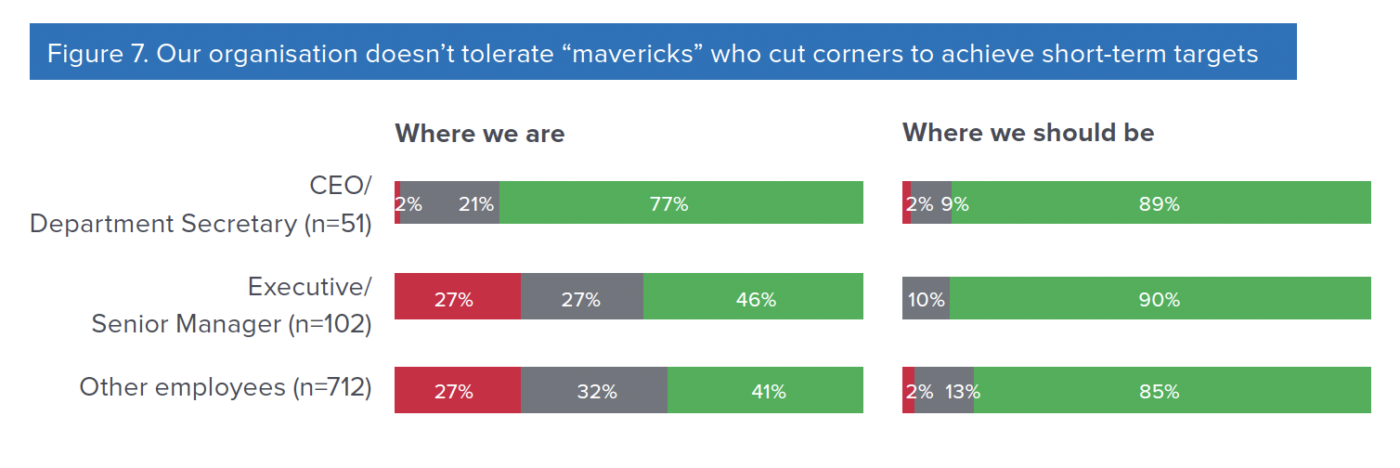Organisational culture problems are pervasive, often immense and leaders aren’t across them, says new research.
By now most Australians know the culture problems of the country’s leading financial institutions, chapter and verse. They know the drivers too, including boards that lack sufficient oversight, troubling remuneration policies and an unacceptable appetite for risk.
What most Australians don’t know is that these issues are not limited to organisations in the financial sector. Indeed, there’s reason to believe that financial and insurance services firms have less significant cultural problems than firms in other industries.
The evidence comes from a new report by the Australian HR Institute (which owns this website) and Insync: 5 Hard Truths About Workplace Culture: a reality check and a pathway towards sustainable business.
The two organisations surveyed 967 respondents from across Australia, including people from a range of industries and across a variety of roles. It asked them to respond to 31 cultural change questions, scoring each on a scale of one to seven.They were asked to answer the question of where they felt their organisation was, and where they thought it should be.
The first truth revealed by the respondents is that cultural problems are pervasive across most industries. But perhaps the most alarming finding is that organisational leaders don’t see the same need for change that everyone else does.
As CEO of AHRI Lyn Goodear said in a press release, “Despite the wake-up call delivered by the Hayne Royal Commission, it is alarming to see a clear disconnect still remains across Australian businesses between the CEO’s impression of company culture and what is being felt at the frontline.”
Everywhere you look
When it comes to the question of the focus on short-term financial goals over long-term sustainability there were remarkably similar answers across industries. Most wanted much more priority given to the latter, but felt their organisation wasn’t there.
 Source: 5 Hard Truths report by AHRI and Insync
Source: 5 Hard Truths report by AHRI and Insync
As the above graph shows, the distance between current reality and preferred state is evidence of a cultural gap or problem. It also shows that financial and insurance services are not exceptionally worse (if any industry is, it seems to be education and training sector).
Both of these things become more pronounced when the respondents were more explicitly asked about whether culture drives sustainability and success.
 Source: 5 Hard Truths report by AHRI and Insync
Source: 5 Hard Truths report by AHRI and Insync
But if less than half of people agree their culture contributes to their success, what do they think the cause of that is? And why is it that financial and insurance services are not alone?
One respondent to the survey had a strong opinion on this: “I don’t think it has anything to do with industry, it has everything to do with leaders.”
The report backs up this assertion. The issue, it seems, might come down to visibility.
Rose-coloured glasses
It should be noted that the report doesn’t show that leaders are completely wrongheaded or blind. Rather, it shows there is a gap between their perception and that of the rest of employees.
On the question of sustainability, for example, CEOs and department secretaries said they are about half-way to the desired goal, whereas other employees felt the journey had barely begun.

Source: 5 Hard Truths report by AHRI and Insync
According to more detailed answers from respondents, there might be a few reasons for this. It could be poor reporting structures. “Sometimes managers don’t want to feed it [negative information] to the CEO because they don’t know how to fix it,” was the feeling of one respondent.
Another respondent says the problem is an inability to put words into action: “Our leaders don’t walk the talk – they do a great job at selling this amazing culture we want, but then their actions contradict what they are saying.”
Problematic staff appears to be another area where there’s a culture gap.
There’s a lot of talk about how organisations should no longer tolerate ‘brilliant jerks’ – people who get wonderful results, but hurt culture and break rules to do so. When asked about whether their organisation tolerate such individuals, leaders felt they were only just falling short of the desired endstate – the gap was 12 per cent. Perhaps they thought there are a few problematic employees, but not too many.
However, that same gap for other employees was a whopping 44 per cent. This suggests they know of quite a few colleagues who are engaging in unethical behaviour, that leaders might be completely unaware of – or even wilfully turn a blind eye to.

Source: 5 Hard Truths report by AHRI and Insync
So what’s happening here? “Whilst the performance framework is strong, the confidence and willingness of leaders to take action on issues of behaviour and performance is often lacking,” said another respondent.
Another was even more searing in their explanation. “[We have] leaders in influential positions who only look to improve their own personal situation and who will use at times unethical means to do so.”
Calling on HR
The report’s ‘fifth truth’ found a broad desire for HR to take on a role as culture partner. It also found that people want the profession to be held to a higher standard.
Eighty-two per cent of non-HR professionals wanted there to be standards set for HR practice “just as they are in professions like accounting”. There was a lesser but still significant desire for them to be held accountable to that standard by a professional body (68 per cent).
But obviously HR is not the complete answer to such pervasive cultural issues. As suggested remedies, the report offers several recommendations that are separated into four different stages.
- Ask penetrating questions
- These include, “Do your leaders communicate, reward and role model expected values and behaviours? Do they hold each other accountable individually and as a team?”
- Conduct an internal reality check
- The report says, “Responsibility should be assigned to key stakeholders from all layers of the organisation, who can offer ongoing insights and champion change.”
- Set a vision and commit to change
- According to the report, “Customers should be at the centre of your thinking and decisions” and “Culture must be a board priority (where the board is provided with a cultural report alongside financial reports).”
- Make sure you have the right team
- “To achieve all of the above, you need culture partners with the right expertise working alongside organisational leaders. Skilled HR partners, who have been industry certified as professional, can positively influence and guide cultural change.”


The report’s recommendations if implemented in letter and spirit and followed up will lead to positive changes on the culture. The elephant in the room is a more realistic acknowledgement of a problem in the corporate culture and real commitment to bring the change in attitudes on it at the very top of the corporate ladder. As long as its business as usual; wherein performance (business results) trumps behaviors (Values), I don’t see how credible the change would be in terms of improving the culture. No wonder most of us would agree with management guru Peter Drucker “Culture eats strategy… Read more »
Yes agreed.. Chang strategists / managers support improved behaviours and attitudes across an org’n at portfolio program project and business areas. However to really see an improvement in culture within any org’n you need leaders coached by change specialists, hand in glove working rel’ship between HR , Change, Communications/PR, and strategy. When all players work collaboratively you tick off key platforms and foundations where change happens subliminally and without fuss. Too much attention drawn to what needs changing and how will always place a layer of stress upon staff and leaders to perform and you will get an opposite reaction… Read more »
While the report frames the symptoms of the culture dilemma, there is overwhelming evidence that any change will be slow incoming until the root causes are addressed. The ‘Toxic Culture’ syndrome impacting organisations stems from execs who don’t want to hear bad news. This causes senior managers to follow the ‘hidden rule’ of don’t make a mistake and if you do, then have a really good excuse. That’s one major contributor to the highlighted gap. One of the critical issues is low trust, high fear and effort spent covering things up. Forget Change Management until you deal with the underlying… Read more »
[…] example, whilst tone from the top is deemed important, a recent study revealed that CEOs don’t see cultural problems, but their employees […]